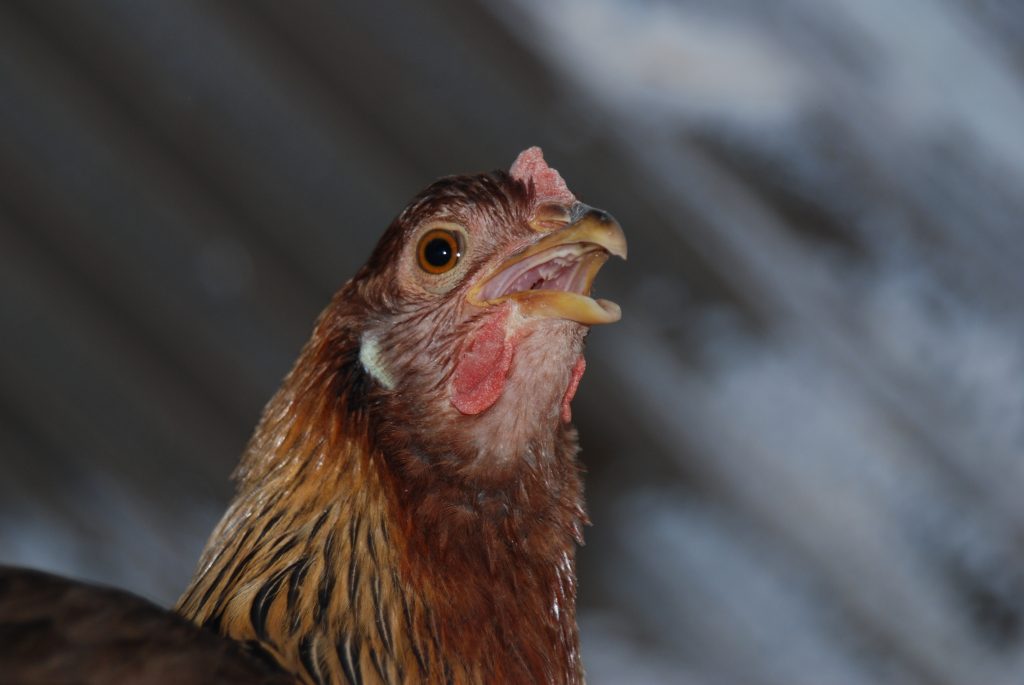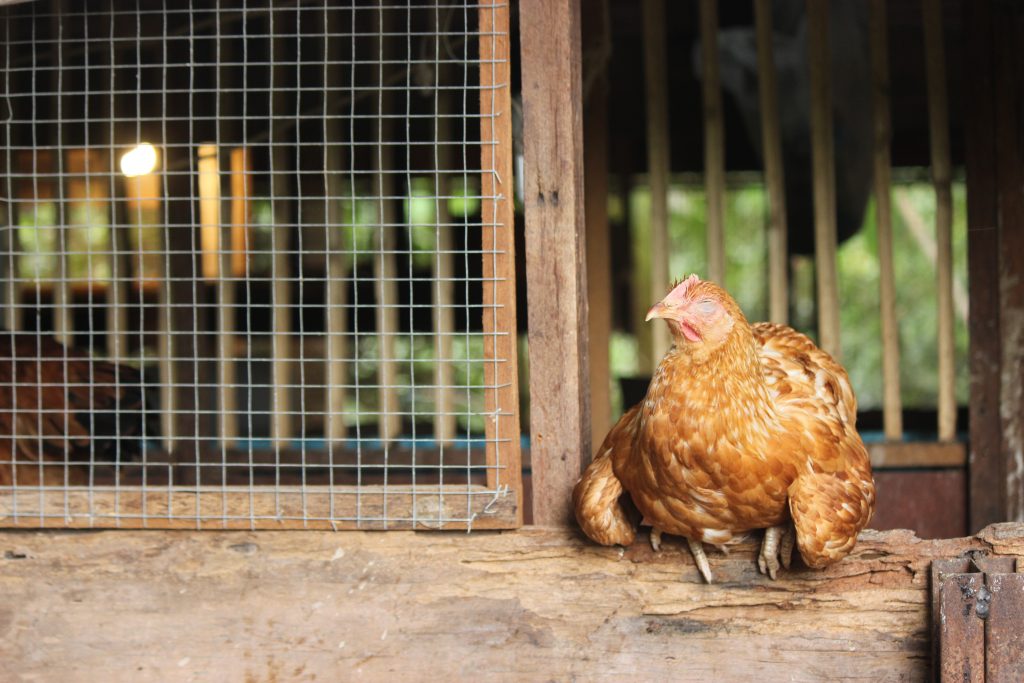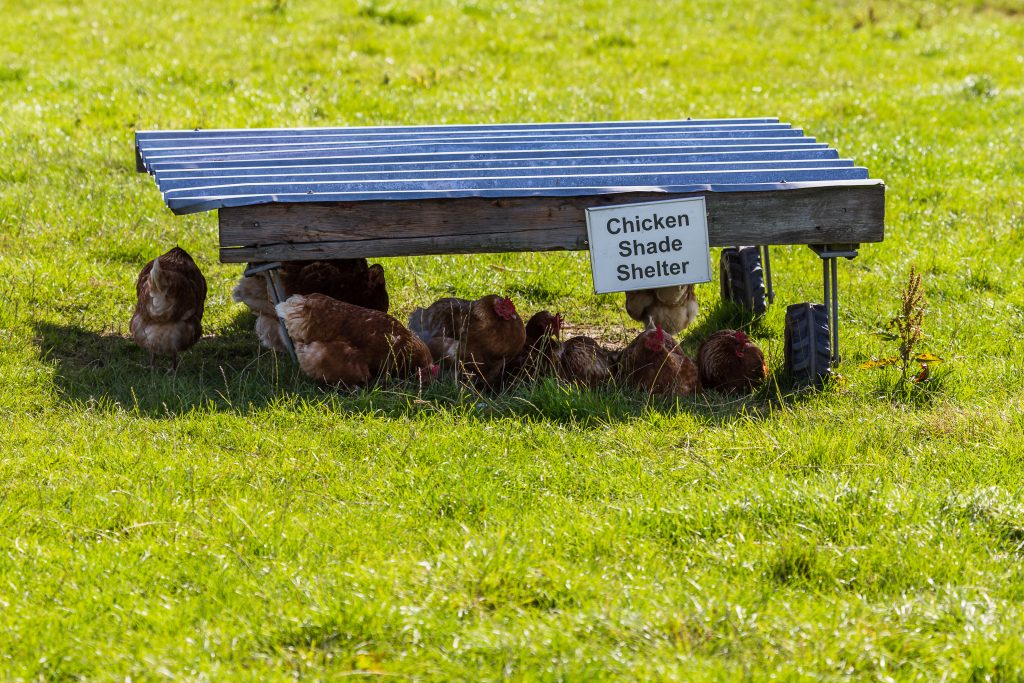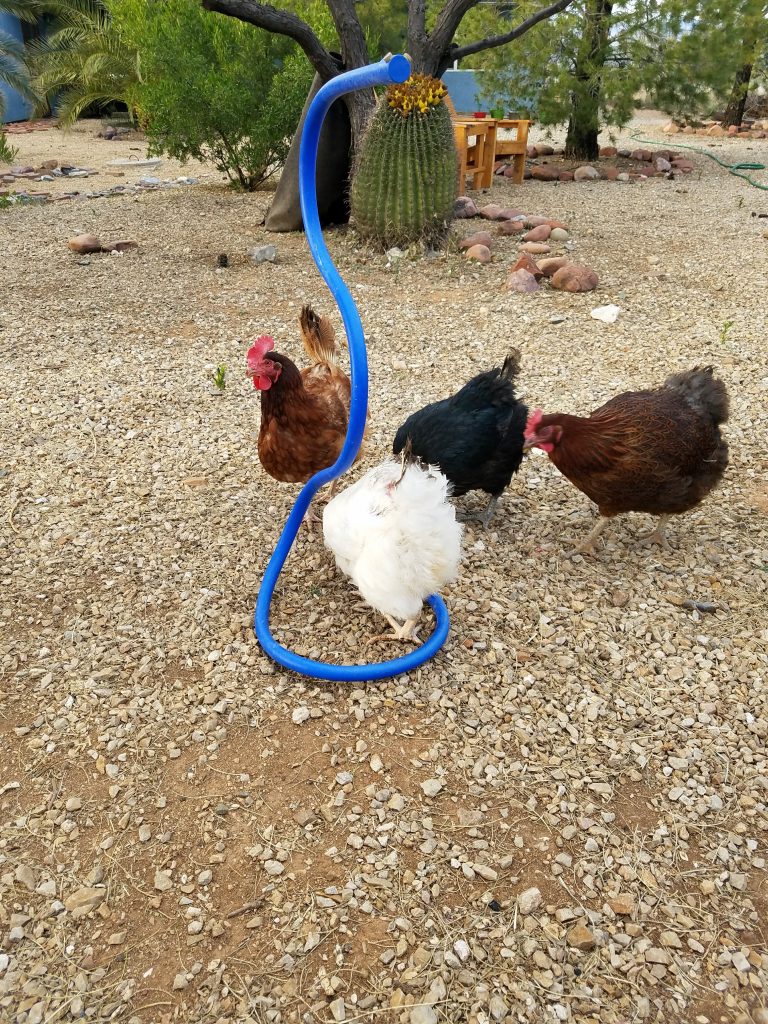Written by: Ashley Wright, MSc, Livestock Area Agent, University of Arizona Cooperative Extension Service
Backyard hens need protection from extreme heat. Without the ability to sweat, hens can quickly overheat and succumb to high temperatures. Shade, water, and ventilation are the three most basic needs to keep chickens comfortable during the summer. Additional cooling such as ice blocks and misters can offer further cooling benefits and help birds survive during times of extreme heat.
Signs of Heat Stress
Behavior
A hen that is simply “hot” may be seen panting lightly, but otherwise will be acting normally. A hen under light or moderate heat stress may pant more heavily. She may also hold her wings away from her body and crouch slightly to aid in heat dissipation through the unfeathered areas under her wings, but she will continue to act normally otherwise. These hens may not be in immediate danger, but it is a sign that further action should be taken to cool them and the rest of the flock to prevent heat exhaustion.
A hen in danger of heat exhaustion will be panting heavily and holding her wings away from her body. She may have a pale wattles and comb, she may be lethargic, limp, or unconscious. A chicken exhibiting these symptoms is in extreme danger of dying from heat stress and needs to be cooled quickly. Submerge her body up to her neck (not her head) in a bucket of cool (not icy) water and place her somewhere cool until she is completely recovered.


Feed consumption
Feed consumption during extreme heat waves will likely go down; a hot chicken will have a decreased appetite. For this reason, it’s important to limit treats and extras (especially scratch grains). Treats should be aimed to increase hen hydration without further decreasing consumption of lay rations, which contain important vitamins and minerals. Freezing watermelon or other chopped fruits/veggies with water into an ice block works well to keep hens cool and busy without excessively filling them up. Feeding hens layer rations in the early morning or late evening when temperatures are lower will aid in increasing feed consumption.
Egg production
Egg production will likely decrease during periods of extreme heat due to the decrease in feed intake. Reduced intake also leads to reduced calcium which could negatively affect eggshell quality. Eggs should be picked up even more often in extreme heat waves. Most hens will lay early in the day. Picking them up as soon as possible is best.
Prevention
Preventing heat stress is much easier than treating it. Have a plan to help your birds stay cool during the peak of summer. Even if you aren’t able to be home during the day, ice blocks or frozen bottles can be placed out in the morning, and misters and fans can be set up on a timer to come on automatically when temperatures begin to climb. With just a little help, backyard birds can make it through the high temperatures of summer unscathed.
Shade
Chickens should have a place to get out of the sun when they begin to get too warm. This may be natural landscaping features such as trees or other vegetation, or shades constructed for this purpose. Tarps or shade cloths can be used over an existing structure for a “quick fix” to provide extra shaded areas for birds. Consider the movement of the sun throughout the day and its effect on the location of the shade within a coop or run. For example, if your shade feature is located on the eastern side of your run, it’s possible that the late afternoon sun will cause the shadow to be entirely outside the area your birds can access. Positioning shade in the middle or west end of the chicken run ensures that chickens will have access to shade during the hottest times of day: midday to afternoon.


Ventilation
Ensure that the shaded areas have proper ventilation. An outdoor run with a shade cover may not need further ventilation, but the insides of small coops or other enclosed buildings can become extremely stuffy. Ideally, hens will have a more ventilated shaded area, but if that is the only source of shade a fan can help move air around. Crack open coop windows and nesting area collection doors if possible. For a more permanent solution, install wind turbine vents in the roof to allow hot air to escape. If temperatures are extreme, place frozen water bottles in nest boxes (change 2-3 times per day as necessary) or block access and provide temporary, alternative laying options (e.g. boxes, bins, or baskets) in cooler areas of the coop or run. Adding a fan to help circulate air is beneficial, especially in enclosed spaces such as coops and nesting areas or during times of heat coupled with high humidity. Use caution however, and be sure the fan and all associated electrical cords are well out of reach of potentially curious chickens.
Water
Chickens should always have access to fresh, clean, cool water, especially in the summer heat. Provide multiple water sources located in shady, cool areas to encourage hens to drink and wade. Add ice cubes, ice blocks, or frozen water bottles to keep water cool. Electrolyte mixes can be used. It’s best to provide the mix in the chicken’s water supply for only a few hours, then remove it and replace with fresh, plain water. Low sided dishes or pans will allow hot chickens to wade in and cool their feet, or high traffic areas can be temporarily flooded (provided the area will dry out fairly quickly). It is important to change open water daily to prevent coccidiosis from spreading. It is not uncommon to see extremely watery droppings during periods of high heat due to increased water consumption. This method, termed excretory heat loss, is one way chickens are able to increase their capacity to cool themselves.
Misters
Misters are another way chicken keepers can cool their flocks. Hot, dry weather lends itself well to evaporative cooling. A simple, standalone mister that attaches to a garden hose can be purchased for around $12. Set up the mister in a shady area near a water supply. If you choose to set it up inside the coop, use caution that it doesn’t soak feed bins or overly saturate the coop floor. A slightly damp dirt or sand floor is a cool and refreshing place to dust bathe, a sopping wet swamp that doesn’t fully dry out breeds disease and attracts pests. More permanent mister systems can be installed fairly easily, can cover a larger area of the chicken run, and can be automated to turn on and off at specific times of day using simple irrigation timers.


